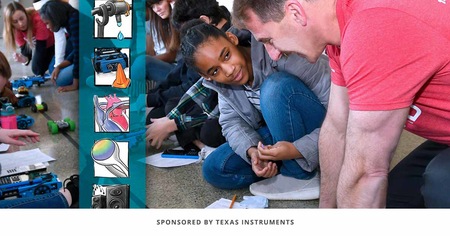STEM job opportunities have grown three times that of any other field in the past 10 years. Today's students will enter the workforce during a dynamic period in the global economy as advancements in science and technology disrupt nearly every industry. However, studies have shown that students' interest in STEM dwindles as they get older. So, how can we help to change that?
Infusing the arts with STEM education is a great way to start.
Children need to be engaged in learning, and by infusing art education with STEM, learning becomes more fun and approachable for them; it opens their eyes to new possibilities, subjects and interests that they had not thought about previously. The arts also help contribute to the development of complex problem solving, critical thinking and creativity—the top three skills reported to be in demand in 2020.
Take a Rube Goldberg machine for example. The machine isn't just about the engineering and precision that is involved; it's about the curiosity, design, creativity and storytelling that went into creating the machine.
The arts also bring an essential component of creative thinking to the table, which has a direct impact on innovation—everything from apps to phones to smart cars. How can you integrate more STEAM-based learning into your classroom or school?
Programs such as Destination Imagination (DI) could be the perfect solution. DI offers short-term and long-term STEAM-based activities and projects that can be integrated into classroom curriculum or incorporated as an afterschool program. Students who participate in DI's Challenge Experience not only have to opportunity to work together in teams on their project, but they also get to showcase their project solutions at a tournament.
Though not all students will excel at STEM, we have the potential to engage and empower more students in those fields by including the arts. By doing so, students don't need to choose between being an artist or a scientist—they get to be both and could become stronger job candidates in the future because of it.
Tina Shaffer, Executive Editor & Social Media Director, Destination Imagination, Inc.
Photo Courtesy of Amanda Tipton.




